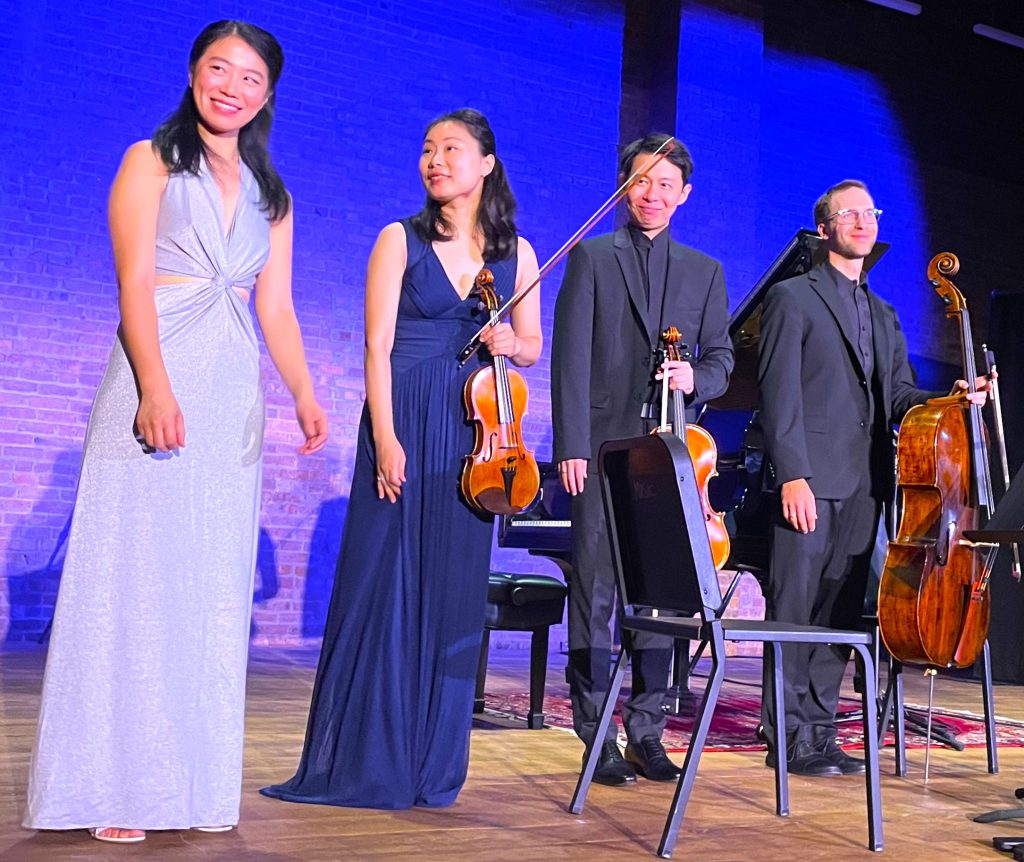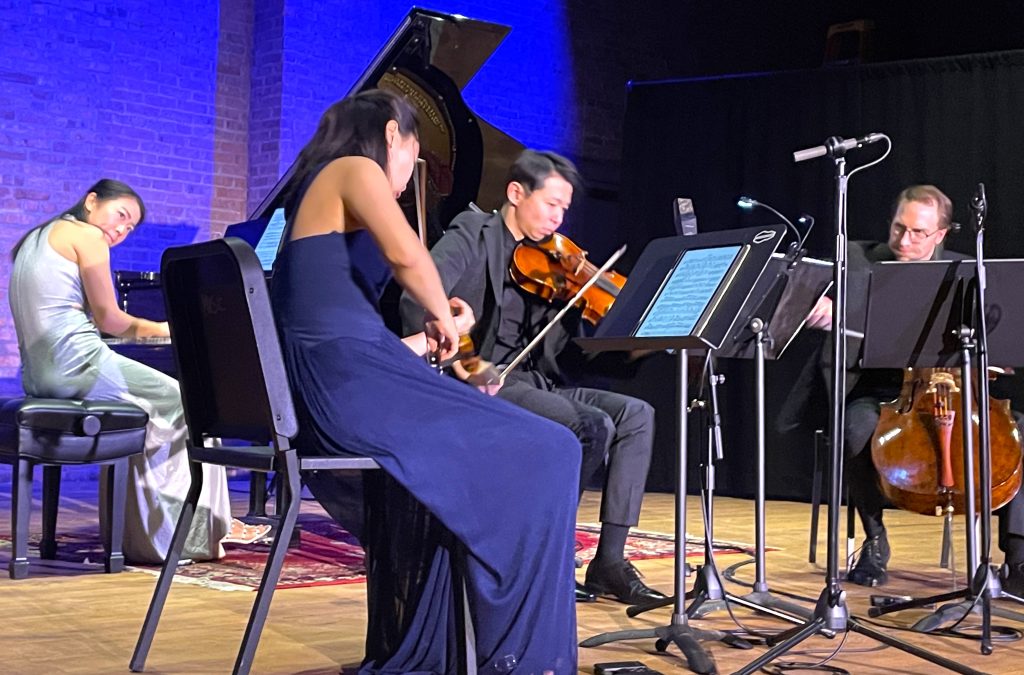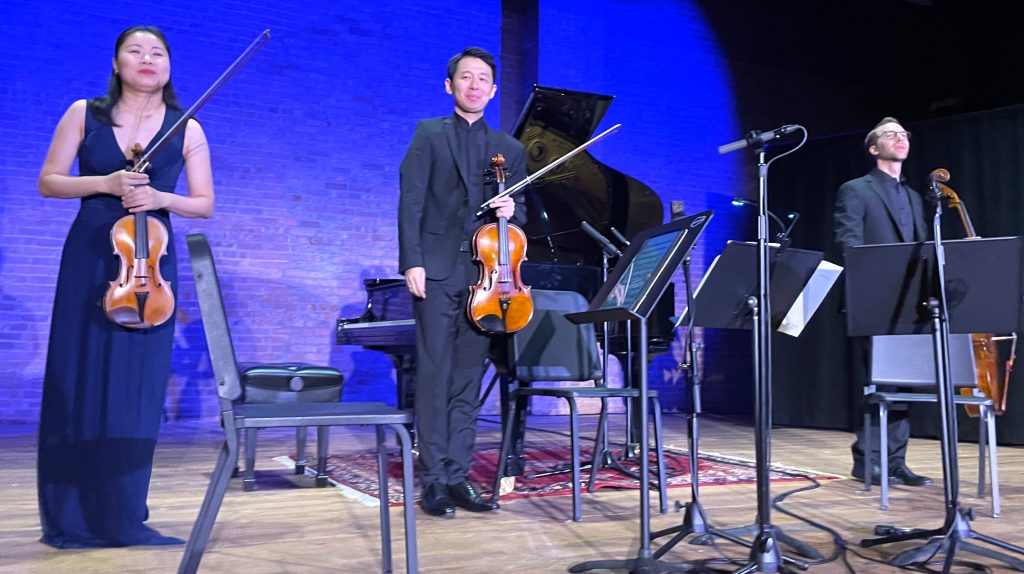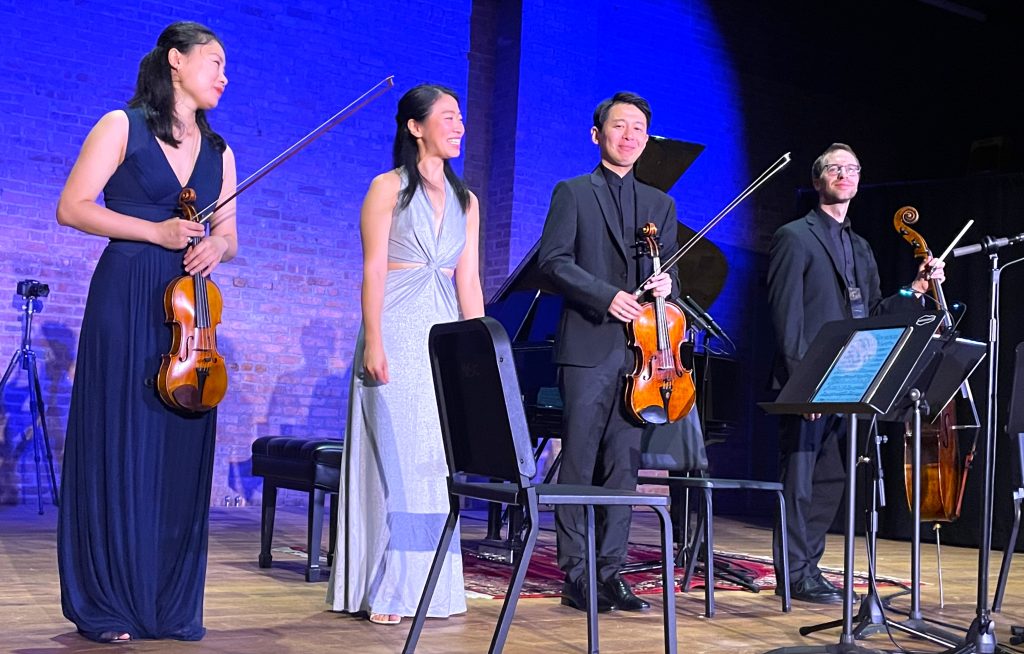
by Kevin T McEneaney
Three musicians from the New York Philharmonic joined Sophia Zhou, Director of the Chamber Music Series at the Stissing Center, for a one-hour concert. (Sophia Zhou has also performed with the New York Philharmonic.)
String Trio in B-flat Major, D451 (1816) by Franz Schubert (31 January 1797 – 19 November 1828) is an early unfinished composition of a man who wrote nearly a thousand pieces before he died at the early age of 31 from unknown causes. We only have the opening Allegro of about ten minutes, yet it remains a vivid example of Schubert’s ability as a teenager to synthesize the Romantic tradition with the Classical tradition as combines ravishing melodies with exciting texture and interplay between Quan Ge on violin, Cong Wu on viola, and Nathan Vickery on cello. The Allegro is complete, although the second movement Andante (of the intended four movements) remains incomplete. We don’t know why the work was not completed, yet we hear a young genius who was a living waterfall of songs (over 600), as well as musical melodies that limn the currents of romance and elegant phrasing with unselfconscious spontaneity. This piece remains an inviting journey in 4/4 rhythm in Sonata form. Quan Ge soared with high notes as Cong Wu added vibrant color while Nathan Vickery on cello sounded like Atlas holding a musical mountain about to be climbed. This little-known composition served as the opening entrée.

String Trio in C Major (1933) by Parisian-born Jean Francaix (1912-1997) was a child prodigy encouraged by Maurice Ravel and Jean’s teacher, Nadia Boulanger. In the first movement, Quan Ge lead on violin painting a picture of suave elegance evoking the ambiance of a sophisticated ballroom. The following Scherzo wickedly satirized the waltz with a crescendo of some drunken dancers falling to the floor as Nathan Vickery’s cello somberly guided the work with sober, caustic wit. Then it was the turn of Cong Wu on viola to lead the next movement as if he was directing a series of concert pop songs. There were three depiction scenes of popular music.
There was no singular instrument leader for the fourth movement, which was an exhibit of a classical trio playing with such intertwined leaderless unity that they nearly sounded like an orchestra! Jean’s work of at least two hundred compositions was renowned for its light-hearted wit.

Quartet for Piano and Strings, no. 1, in C minor, Op. 15 (1876-1883) by Gabriel Fauré opened impressively with Vickery’s s cello meandering and meditating with idiomatic drama while inhabitants paced about the claustrophobic house; Ge’s violin provided first a fluffy, then icy touch. We were stuck in the season of Winter. Yet at the conclusion of the Allegro, there was some gentle, hopeful, remission from the cold.
The following Scherzo dramatized the fickle nature of Spring and here the viola played by Wu offered rounded nuance. Violin and piano energetically enjoyed the surprising, trilling aspects of Spring as Zhou glided over the keys with the liquid facility of a gurgling stream while the cello remained dutifully skeptical about the weather.
The long Adagio celebrated the glories of the Summer landscape where Wu added much color, yet the movement ended with tender, elegiac mode, lamenting that Summer was over. The concluding Allegro reflected on memories as it acclaimed the robust abundance of the bracing season with the pleasure and abundance of apples. The unified sound of all four players celebrating the concluding summation of the seasons was impressive!

